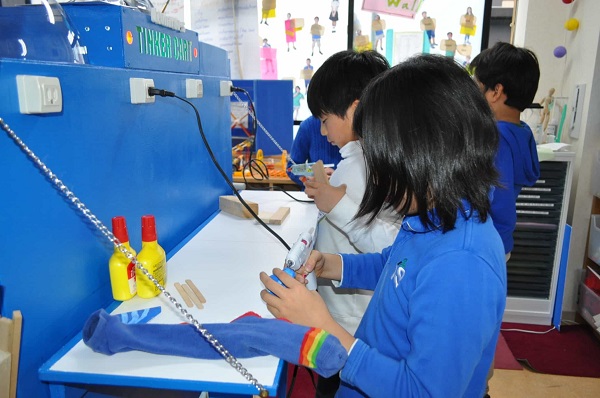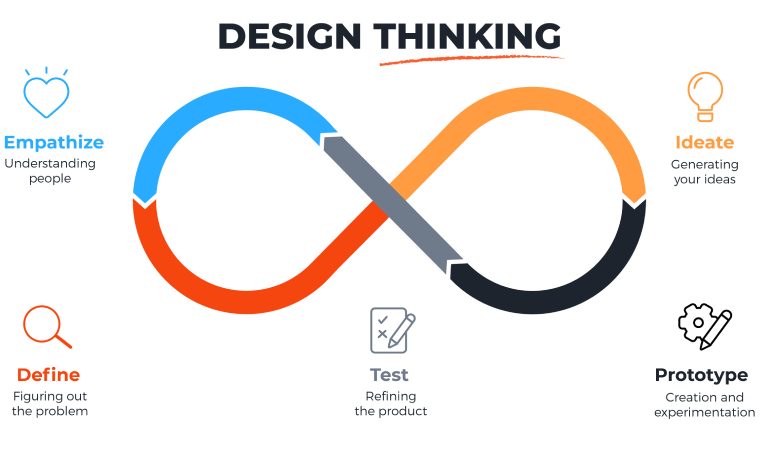The Surprising Benefits Of Design Thinking In Learning
What Is Design Thinking?
Design Thinking skills are important in the workplace because they help you deal with situations you have never encountered before. The concept refers to applying creativity and innovation to solving problems. Learning Design thinking skills can help students better understand what they are learning and question what they are doing. Simply put, design thinking equips students with the knowledge and skills required for the twenty-first century.
Read on if you want to know why some of the best schools in Chennai (https://www.babajividhyashram.org/), like BVS, include design thinking labs in their curriculum.
Design Thinking Process: An Overview
Design thinking is a process that involves the generation of new and innovative ideas that are centred on the solution of problems. This skill empowers you to ask probing and provocative questions to generate ideas, suggestions and solutions. It is a process that fosters creativity and allows students to explore previously unexplored and undiscovered areas.
Design thinking skills are required in 21st-century workplaces and many academic fields. In businesses, design thinking helps you empathise with the people who use your product. It helps you develop deeper insights and understandings about user behaviour and needs. Design thinking is critical in the education of engineers who will solve real-world problems. According to Wired, most businesses are looking for innovative thinking to prepare for the future.
Design thinking practitioners use user-based studies, the Beginner’s mind approach, as well as user research and user interviews to define their project goals and define their problems. Thinking processes include defining problems, creating prototypes, and repeating the process until you develop practical solutions.
Design thinking courses are now part of the curriculum at the best CBSE schools in Chennai for the 11th and 12th grades. The following are a few benefits of including design thinking courses in the school curriculum.

Benefits Of Design Thinking Course For School Students
A design thinking process is a powerful approach to teaching students 21st-century skills such as creative thinking, decision-making, and problem-solving. Design thinking skills can help high school students land their dream jobs.
Design thinking is useful for school children, particularly in India, where the educational system strongly emphasises rote learning. It is an exploratory and iterative approach to decision-making. Design thinking tools can help you nurture your natural curiosity as a child and help you learn more about the world and its problems. This process helps them develop confidence in themselves and to be fearless in their decisions and choices. Design thinking courses can assist children in developing a mentality of service toward others and develop IoT skills to assist their parents. With these skills, students become more optimistic, empathetic, and intelligent members of society. Here are a few other benefits that emphasise the benefits of design thinking in school education.
- Design thinking teaches you to be open-minded and adaptable in your thinking.
- Design thinking is used to teach students the fundamentals of problem-solving techniques and solve real-world classroom problems.
- Design thinking tools will allow you to iterate solutions for problem statements, and you will be able to approach challenges playfully and interestingly.
- Design thinking is a problem-solving approach that is centred on the needs of the people involved. It applies to people working in a variety of industries and will help you develop interpersonal skills.
How Can Design Thinking Transform Our Education System?
Design thinking projects for school students will encourage students to broaden their horizons, look for problems and then look beyond themselves to find solutions. It is also important for the development of critical thinking. Developing design thinking skills is dependent on a student’s ability to think and reason objectively while searching for the most appropriate answers and solutions.
Stanford Design School popularised the term design thinking, a human-centred approach to problem-solving that emphasises innovation. Design thinking and inquiry-based learning strategies are also linked to experiential learning tactics. It can be applied across the curriculum and is closely associated with STEAM education. Some education programs use design thinking and experiential learning to teach students coding, robotics, music production, filmmaking and photography, 3D modelling, and game design.
It encourages creative problem-solving and unconventional thinking. No wonder design thinking and the Maker Movement are becoming more common in classrooms.
What Is The Maker Movement?
The Maker Movement is a form of design thinking that encourages students to experiment, fail, and share their findings as they develop new ideas. Both maker movements and design thinking are characterised by the ability to learn and improve over time and the willingness to experiment and fail, which are vital to coping with our world’s rapid changes. These help students develop real-world, transferable skills.
Summing up
Design thinking and the maker movement are effective teaching strategies that help students become global citizens of the future. Integrate design thinking into your curriculum to develop students holistically! Read More




